Judi Lynn
Judi Lynn's JournalUnderstanding Colombia’s armed conflict: International actors
Understanding Colombia’s armed conflict: International actors
Jan 15, 2015 posted by Joel Gillin
Compared with much of the world, Latin America was relatively free inter-state wars during the 20th century, and Colombia is no exception. While tension with neighboring countries, particularly Ecuador and Venezuela, increased during the hardline administration of Alvaro Uribe, much of the violence experienced in Colombian society comes from domestic actors.
These domestic groups responsible for violence have, however, arisen in a context in which international forces have played a significant role in augmenting their the strength and objectives. The two of the most important forces that have contributed to the Colombian conflict are multinational companies and the United States.
As with drugs, rather than call these actors a “cause” of the conflict, it is more accurate to view them as contributors. Structural factors, such as political exclusion, inequality, and a weak state presence can be seen as fundamentally creating the context in which international forces would become involved.
The banana massacre of 1928
Famously fictionalized in the Gabriel Garcia Marquez’s iconic novel One Hundred Years of Solitude, the banana massacre of 1928 was an all-too-real historical event that demonstrates well the role international corporations have played in Colombia.
The United Fruit Company was created in 1899 and had a virtual monopoly on the banana trade in a number of Central American countries. These small nations, such a Guatemala and Honduras, were to be called “banana republics” due to the power wielded by the company over their economy and politics. A number of high-ranking US officials had direct ties to the company. John Foster and Allen Dulles, who would go on to head up the State Department and the CIA for Eisenhower in the 1950s, were both on the company’s payroll for more than three decades.
By 1928, the company employed some 30,000 Colombians on the Caribbean coast, according to historian and Razon Publica editor Nicolas Pernett. Most of these workers, however, were hired via contractors and only a few hundred were legally contracted by the company. To formalize their labor relations with United Fruit, and to demand better work conditions and increased pay, the workers went on strike.
Cables sent by then-US Ambassador Jeffrey Caffery show the the strike was seen as a threat to “American interests” and as “subversive.” He was in regular contact the United Fruit Company’s representative and even requested that Washing send an American warship to be put on alert should the company’s property or the 20 Americans then in the vicinity be threatened.
The company refused to negotiate with the workers and the Colombian government, then ruled by the Conservative Party, viewed the strike a violation of public order, sending in the national army to quell the unrest. When strikers, viewed as “bands of Communists” by the Colombian government and US ambassador, failed to disperse, the troops opened fire. It is unclear how many died. The Colombian army said the figure was only nine, but a US cable shows that United Fruit believed it to be more than 1000. A month after the massacre, Caffery told Washington: “I have to honor to report that the Bogota representative of the United Fruit Company told me yesterday that the total number of strikers killed by the Colombians military exceed one thousand.”
More:
http://colombiareports.co/causes-colombia-conflict-international-actors/
The US Covert War on Venezuela in 2015
The US Covert War on Venezuela in 2015
By Arturo Rosales and Les Blough in Venezuela
Wednesday, Jan 14, 2015
2014 was a year filled with the goodness and beauty that has made Venezuela one of the most livable countries on earth for the last 15 years. The music, art, climate, food and the spectacular beaches, stunning mountains and views and expansive plains are part of the charm. But it's the people themselves, their racial & ethnic plurality, sense of community, warm spirit, patience and the inevitable smile one receives immediately upon eye contact that brings joy to daily life here, even in the midst of adversity.
2014 was also a year here in Venezuela that was scarred by actions of the political opposition, funded by Washington and supported by the Western media. Bereft of support by the majority of Venezuelans and unable to gain power through a peaceful electoral process, the opposition resorted to: sabotage of the infrastructure (e.g. attacks on the electrical grid); hoarding and dumping food and daily household products to keep them off the retail markets; manipulating food distribution to create the appearance of “shortages;’ smuggling subsidized products across the border into Colombia for huge profits; attacks on the economy with speculation and an illegal black-market dollar system, driving up a manipulated rate of inflation with spiraling prices in retail markets; causing capital flight by abusing the government’s system of making dollars available for imports and leisure traveling and the violence we saw for 3 months from February to April in the guarimbas in which more than 40 people were killed under the pretext of “student protests.” The greater violence in 2014 ended with the assassination of the foremost leader of Venezuelan youth, youngest member of congress, Robert Serra along with his spouse in their home on October 1, 2014.
The attacks on the Venezuelan economy are manifold. The attempt to destroy the national currency, the bolivar, began in earnest in October 2012 after the re-election of former President Hugo Chávez Frías. At that time, the bolivar was trading at 13.4 bolivars to the dollar. By means of speculation and the illegal black-market dollar, the official exchange rate for most items was forced to soar to 50:1 and the black market dollar rate is currently at about 200:1 and increasing from week to week. By all these means, high prices, making food and products unavailable, standing in long lines waiting to purchase anything from laundry detergent to corn meal, electrical outages, etc, Washington is bent on making life as miserable as possible for the people to turn them against the government. Moreover, the violence is meant to cause fear and a climate of insecurity among the people – in a word, terrorism, laying blame on the government and to portray Venezuela in the media as one of the most dangerous countries on earth.
2015 promises to bring the same music, culture, climate, and smiling faces in the cities, towns, beaches, mountains and plains as all other years. The people are extremely patient and know the root causes of many problems. But given the US continuing focus to overthrow Venezuela’s socialist government and its unrelenting march for global dominance on other continents, it’s reasonable to expect that their attacks in 2015 will increase.
2015 will be an important nationwide election year for members of the National Assembly (parliament) and the assault on Venezuela this year will focus on turning the people against the government to gain control of the government through the National Assembly in the December elections.
More:
http://axisoflogic.com/artman/publish/Article_69015.shtml
Panama denies refugee status to Colombia’s fugitive former spy chief
Panama denies refugee status to Colombia’s fugitive former spy chief
Jan 13, 2015 posted by Adriaan Alsema
Colombia’s former spy chief can no longer count on the protection of the Panamanian government after its decision to not grant asylum to the disgraced former official accused of spying against presumed political enemies of former President Alvaro Uribe.
The director of Panama’s refugee agency told local newspaper La Prensa that Maria del Pilar Hurtado, the former director of the now-defunct Colombian intelligence agency DAS, had filed a second request for political asylum late last year, and that this request had been denied by the Panamanian government.
Hurtado fled Colombia in 2010 before being charged for multiple alleged crimes after judicial investigators found out that the DAS had carried out illegal spying operations against the Supreme Court, politicians, journalists and human rights workers.
The disgraced was one of numerous top officials, including Uribe’s former chief of staff, who were charged with abuse of power, conspiracy, the illegal use of communications equipment and fraud.
Hurtado was initially granted asylum by the administration of former Panamanian President Ricardo Martinelli, reportedly a personal friend of Uribe.
More:
http://colombiareports.co/panama-rejects-asylum-colombias-fugitive-former-spy-chief/
Peru planning 'second Machu Picchu' in Chachapoya
12 Jan 2015
Peru planning 'second Machu Picchu' in Chachapoya
BY Tom Anstey
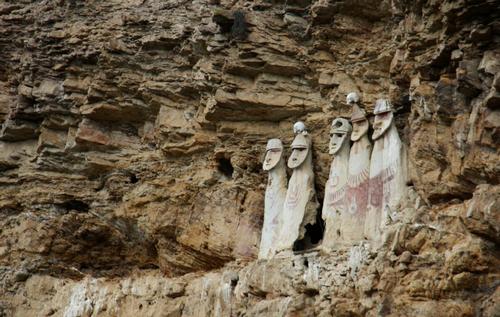
[font size=1]
Chachapoya remains largely unexplored due to a lack of easy access and awareness
photo: Flickr.com/worldsurfr
[/font]
Peruvian officials are planning to create a historical site to rival that of Machu Picchu, in the form of one of its best kept secrets – the Chachapoya ruins of the northern “cloud people”.
While Machu Picchu has been on the tourist map for virtually every visitor to Peru, Chachapoya is largely unexplored by most foreigners, save some adventurous backpackers. But the government plans to change that and ease traffic off its crown jewel of Machu Picchu – which has been at risk from increased footfall – and increase traffic to the northern Amazonas region of the country.
In the government plan, a cultural heritage site known as Kuelap will act as the centrepiece of a “second Machu Picchu”, with use of surrounding sites including Sipan, Chan Chan, Leymebamba, and Gran Pajaten, which all date back to the 9th century.
Such sites remain largely unexplored due to inaccessibility and lack of general awareness, but in the government’s plan a cable car system will be built to allow easy public access to the area, which sits on the top of a mountain ridge in a “cloud forest”.
“Kuelap could be a second Machu Picchu, easily,” said Peru’s President Ollanta Humala. “With Kuelap, we can create a tourist circuit that will be as competitive as the south.”
Set to open in 2016, the US$18m (US$15.2m, €12m) cable car system will have the capacity to transport 1,000 passengers per hour.
More:
http://www.leisuremanagement.co.uk/detail.cfm?pagetype=detail&subject=news&codeID=313381#sthash.XrnP964O.dpuf
[center]
(Artist's impression of Kuelap. Please see the link below for wonderful views of this site.)
https://www.google.com/search?sourceid=navclient&ie=UTF-8&rlz=1T4TSND_enUS566US566&q=Kuelap%20Peru&gws_rd=ssl&tbm=isch


Sipan
https://www.google.com/search?sourceid=navclient&ie=UTF-8&rlz=1T4TSND_enUS566US566&q=Sipan+Peru&gws_rd=ssl&tbm=isch

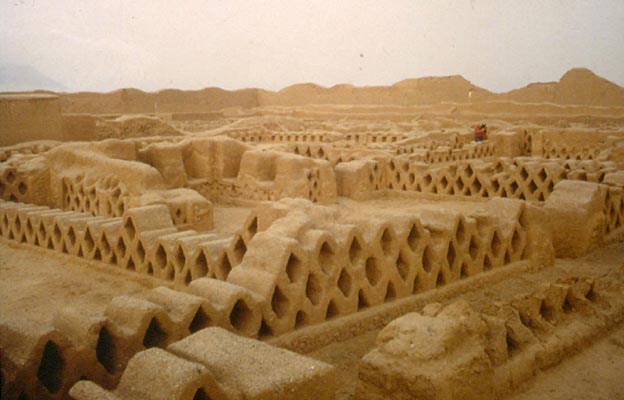
Chan Chan
https://www.google.com/search?sourceid=navclient&ie=UTF-8&rlz=1T4TSND_enUS566US566&q=chan+chan+Peru&gws_rd=ssl&tbm=isch

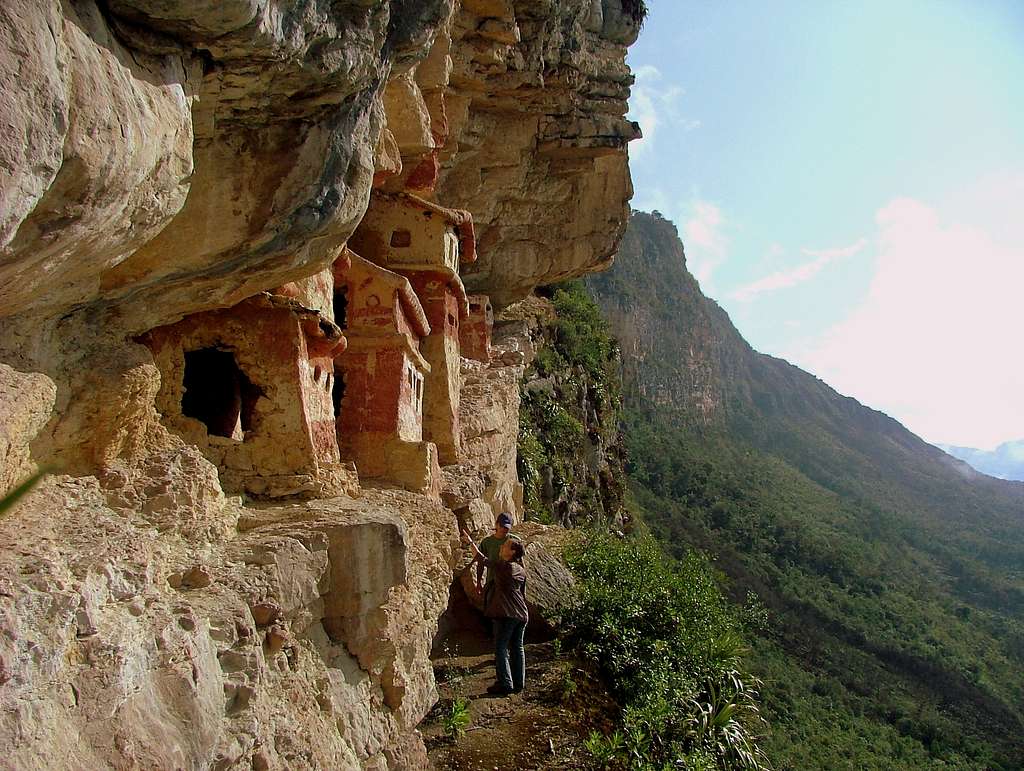

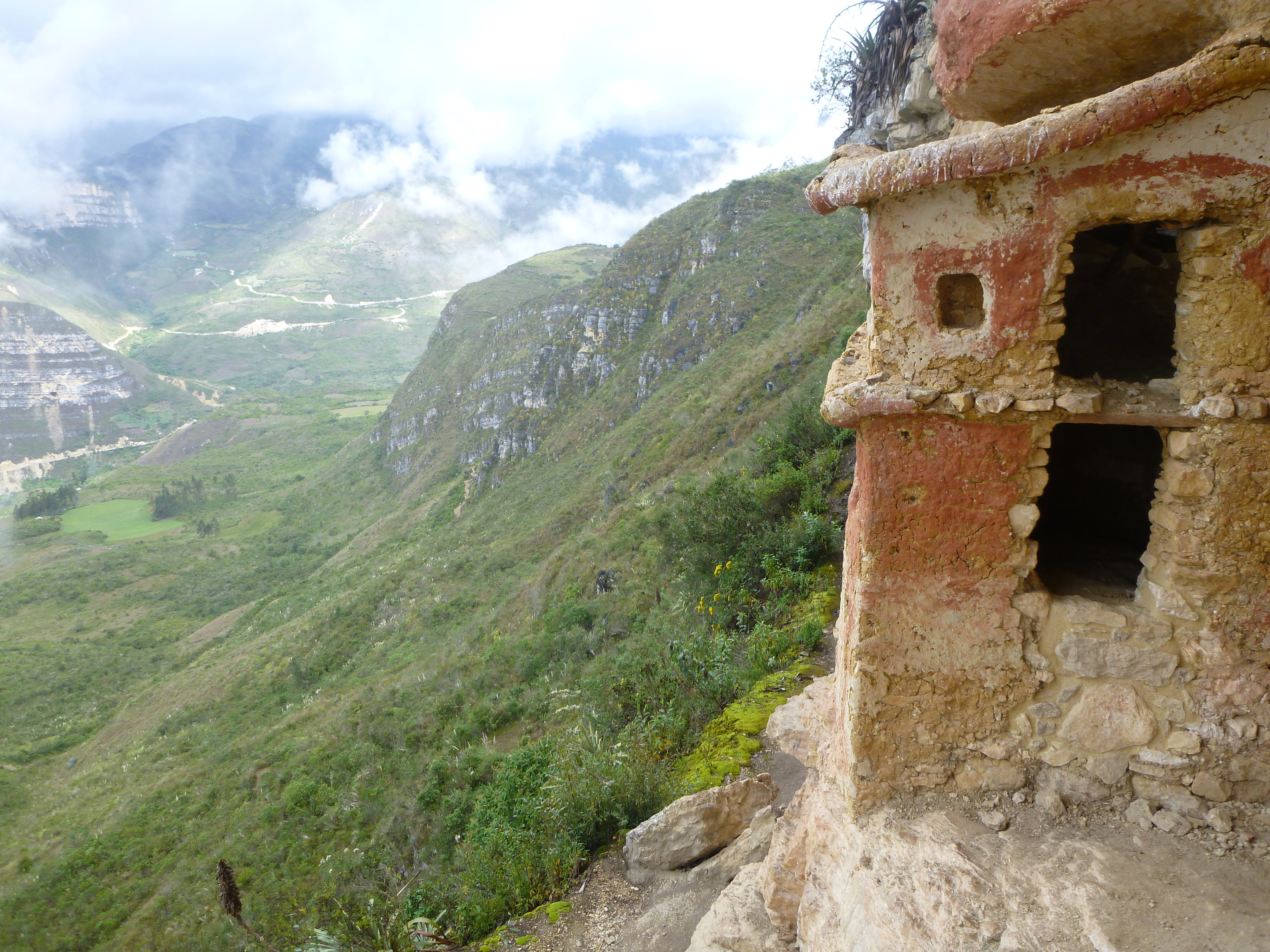
Leymebamba
https://www.google.com/search?sourceid=navclient&ie=UTF-8&rlz=1T4TSND_enUS566US566&q=Leymebamba+Peru&gws_rd=ssl&tbm=isch





http://4.bp.blogspot.com/-vHkVnONpwfM/UPWV8EZ9LkI/AAAAAAAAIWs/1TYl3oMF5cs/s1600/13B-Image+Gran+Pajaten+Wall.jpg
Gran Pajaten Peru
"a fortress in the clouds of Northern Peru"
https://www.google.com/search?sourceid=navclient&ie=UTF-8&rlz=1T4TSND_enUS566US566&q=Gran%20Pajaten%20Peru&gws_rd=ssl&tbm=isch[/center]
Unbelievable. There is SO much to learn. We need to live hundreds of years to find out what will be learned later from places like this!
Haiti protesters again rally to demand president's departure
Haiti protesters again rally to demand president's departure
By DAVID McFADDEN, Associated Press | January 10, 2015 | Updated: January 10, 2015 8:08pm
PORT-AU-PRINCE, Haiti (AP) — Protesters burned tires and threw rocks and glass bottles at riot police during another anti-government demonstration in Haiti's capital Saturday amid a bitter political stalemate over long-delayed elections.
The demonstration of mostly young men reached a peak of about 1,500 in downtown Port-au-Prince as protesters called for the departure of President Michel Martelly, who took office in May 2011 and is due to leave next year. Police fired tear gas and sprayed water from an armored vehicle, scattering the crowd at a plaza close to where the National Palace stood before it collapsed in Haiti's 2010 earthquake.
There has been no letup in raucous protests since last month's resignation of Martelly's prime minister, Laurent Lamothe, and other concessions aimed at resolving the stalemate holding up legislative elections. A presidential commission had called for Lamothe's resignation, among other steps, to resolve the gridlock that has sparked protests.
Riche Clebert, a snack vendor who did not participate in the demonstration, said he has grown exhausted with the cycle of political protests, which often end with violence near the old National Palace site.
"I have three children to feed and I have lost all patience with this. This is not leading our country anywhere," Clebert said as he clutched his tray of sugary breads and watched dozens of young men running from billowing clouds of tear gas.
After fleeing a blast from a water cannon, protester Jean Junior said Martelly had to go. "Haiti cannot continue like this because the population has not benefited from this government," he said.
More:
http://www.chron.com/news/world/article/Haiti-protesters-again-rally-to-demand-6006830.php
Tribes join effort to keep Yellowstone grizzlies protected
Tribes join effort to keep Yellowstone grizzlies protected
By MATTHEW BROWN, Associated Press | January 11, 2015 | Updated: January 11, 2015 2:31pm
BILLINGS, Mont. (AP) — Leaders of American Indian tribes in the Rocky Mountains and Great Plains have joined an effort to retain federal protections for grizzly bears in and around Yellowstone National Park.
The U.S. Fish and Wildlife Service is expected to decide this year whether it will move to lift protections for the roughly 1,000 grizzlies that scientists say live in the Yellowstone region of Montana, Idaho and Wyoming.
The campaign to enlist tribal backing for continued protections is being coordinated in large part by wildlife advocates. Organizers say more than two dozen tribes have signed on with resolutions and other declarations of support.
Tribal leaders cited their ancestral connection to the Yellowstone area and the cultural importance of grizzly bears to their people.
"Any move to delist the sacred grizzly bear on this ancestral landscape must involve consultation with the affected Tribal Nations," wrote Ivan Posey, a member of the Eastern Shoshone and chairman of the Montana Wyoming Tribal Leaders Council, in a letter last month.
More:
http://www.chron.com/news/science/article/Tribes-join-effort-to-keep-Yellowstone-grizzlies-6007939.php
Photographer captures rare ice halo phenomena in New Mexico
Photographer captures rare ice halo phenomena in New Mexico
The phenomenon comes from ice crystals in the atmosphere.
By Thor Benson | Jan. 10, 2015 at 5:51 PM

US National Weather Service Amarillo Texas
Government Organization · 30,612 Likes · Yesterday at 9:04am · Edited ·
..
Photo taken and provided by Joshua Thomas. Taken in Red River, NM the morning of January 9, 2015.
RED RIVER, N.M., Jan. 10 (UPI) -- A photographer from Texas, Joshua Thomas, recently captured a photo in New Mexico of a rare ice crystal halo phenomenon.
In order to point out the interesting details in the photo, the US National Weather Service of La Crosse, Wisconsin made the photo into a diagram that shows the different aspects of the halo.
The phenomenon occurs when minuscule ice crystals in the atmosphere reflect and refract light in a certain way. The halos can be created by light from the sun or the moon, and seeing one often means there will be some kind of precipitation within the following 24 hours.

http://www.upi.com/Science_News/2015/01/10/Photographer-captures-rare-ice-halo-phenomena-in-New-Mexico/8911420929196/?spt=sec&or=sn
Venezuela hands out 675,000 homes in 4 years
Venezuela hands out 675,000 homes in 4 years
By Staff Writers, teleSUR
Friday, Jan 9, 2015
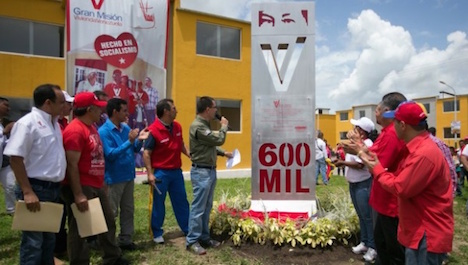
[font size=1]
The Great Housing Mission Venezuela (GMVV) turned in home number 600,000 in Hugo
Chavez's home town of Sabaneta, Barinas | Photo: AVN
[/font]
The government of Venezuela has built and handed out 675,991 homes in the last four years, Minister of Housing and Habitat Ricardo Molina confirmed Wednesday.
At the start of 2015, Venezuela handed over 700 apartments in different states to hundreds of families.
Upon his return following visits to Russia, China and with the member countries of Organization of the Petroleum Exporting Countries, President Nicolas Maduro will announce more of the government's strategies to continue the construction of homes as well as other government objectives this year.
The Great Venezuelan Housing Mission (GMVV) began in 2010 under the leadership of former President Hugo Chavez to provide homes for families affected and displaced by landslides from heavy rains. Since its introduction, the program expanded to resolve Venezuela's housing deficit.
Through the program, families are provided with the houses – equipped with all appliances and furniture – and the titles to the property free of cost.
More:
http://axisoflogic.com/artman/publish/Article_68951.shtml
Neoliberalism’s Latin American Struggle
Weekend Edition January 9-11, 2015
What of the Rest of the World?
Neoliberalism’s Latin American Struggle
by ROBERT HUNZIKER
“For example, when we say that the Chilean state should become a true guarantor of material rights, that is certainly antithetical to the neoliberal capitalist vision which turns rights into a business to be regulated by the market,” — Camila Vallejo (former Chilean student protest leader) interview by Zoltán Glück at CUNY Graduate Center, Oct. 15, 2012.
Neoliberalism has been an “occupying force in Latin America” for over three decades while it has stripped the nation/state(s) of the functionality of a social contract, pushed through wholesale privatization of public enterprises, and expropriated the people’s rights to formal employment, health, and education, all of which are crowning glories for “free-market determinism.”
Throughout Latin America (as well as around the world), neoliberalism’s motif consists of assault on the state, in favor of the market, on politics, in favor of economics, and on political parties, in favor of corporations. Singularly, neoliberalism brings in its wake a “corporate state.”
Henceforth, the corporate state, shaped and formed by neoliberal principles, pushes the social contract backwards in time to the age of feudalism, a socio-economic pyramid with all of the wealth and influence at the pinnacle, but, over time, like an anvil balanced on balsa wood.
Albeit, the Left, with renewed vigor, has pushed back against neoliberalism’s robbing the poor to enrich the rich. And, there are clear signals that this pushback has gained traction throughout Latin America.
More:
http://www.counterpunch.org/2015/01/09/neoliberalisms-latin-american-struggle/
Democracy in Cuba and at Home
Weekend Edition January 9-11, 2015
A Review of Arnold August's "Cuba and Its Neighbors" (Part One)
Democracy in Cuba and at Home
by MAXIMILIAN C. FORTE
Arnold August’s Cuba and Its Neighbours: Democracy in Motion is a richly documented and thus very detailed description and analysis of the history, theory, and practice of democracy in Cuba. Based on several years of participant observation in Cuba, in addition to numerous research trips since 1991, Cuba and its Neighbours provides a close-up view of the Cuban process of democratization, primarily focusing on the past decade. This work builds on his first book on Cuba, Democracy in Cuba and the 1997-98 Elections (Havana: Editorial José Martí, 1999), which was based on participant observation during the elections spanning 1997-1998 and focused on the electoral process. In the 2013 book under review here, August focuses on the forms of direct democracy and popular power that exist in Cuba today, the role of mass organizations, the National Assembly, the Communist Party, and the history of Cuban constitutions, set in a wider regional comparative framework that also includes discussion of democracy in Venezuela, Bolivia, Ecuador, and the US. It is a “must read” especially if you have been trained to accept the orthodox dogma that Cuba is merely a “dictatorship,” a “tyranny” that is exclusively dominated by “the Castro brothers”. August’s book does great justice to the complexity and historical development of Cuban democracy, and no discussion on that subject should proceed if one has not first read this book.
August’s interests in this area go back at least four decades, to when he was a political science student in Montreal in the late 1960s. He was part of a movement to “open the curriculum,” to include “new approaches to the South that did not encompass only theories and analyses based on the racist assumption of innate superiority that dominated academia in the North at the time” (and still today). (August, 2013, p. xiii). His aim in this book is to broaden our understanding of democracy, our understanding of Cuba, and of democracy in Cuba. He does so by bringing to light what is too often ignored, the development of a “grass-roots and revolutionary political culture” (August, 2013, p. xv). His ethnographic work involved living in Cuba for a period that spanned years, participant observation in elections, attendance in municipal assemblies and at the National Assembly, participating in meetings of the Workers’ Central Union of Cuba (CTC), and dozens of interviews with National Assembly delegates, professors, journalists, and trade unionists, among others.
What follows immediately below is a summary and overview of the text as a whole. In part 2 of this review essay, August’s book is placed within a much broader discussion on plural and diverse understandings of democracy, on democracy and political anthropology, and comes back home to discuss the nature of our democracy, at the elite level and in the everyday.
Chapter 1, “Democracy and U.S.-Centrism,” brings to the fore the question of different types of democracy, and he warns against Eurocentric misconceptions surrounding the concept of democracy (August, 2013, p. 2). His argument is that “democracy” cannot be discussed without taking into account the social and economic system in which it takes place (p. 3). Interested in alternatives, he begins by considering socialist systems compared to capitalist ones. With reference to socialist systems, he argues that though they meet a political definition of democracy by constructing collective ownership of resources, either directly or via the state, that does not automatically translate into a real and effective distribution of power. For that to occur, what is needed is participatory democracy, “the people’s ongoing daily involvement in the political and economic affairs of the country” (p. 4). He also prefers to speak of “democratization” rather than “democracy”: democratization “stresses democracy as a progression, constantly in motion. ‘Democracy’ as an abstraction tends to be fixed in time, restrained by predetermined structures and often without any socio-economic content” (p. 5). In challenging Eurocentric conceptions of democracy and politics, enshrined in the modern disciplines created in the West in the late nineteenth-century, August instead directs our attention to the political understanding of Cubanía, of Cubans thinking for themselves–“Cubanía means…putting things Cuban on the agenda” (p. 9). He also shows throughout his book that the Cuban revolutionary system possesses its own originality–it is not some copy of an imported ideology or system.
More:
http://www.counterpunch.org/2015/01/09/democracy-in-cuba-and-at-home/
Profile Information
Member since: 2002Number of posts: 160,656